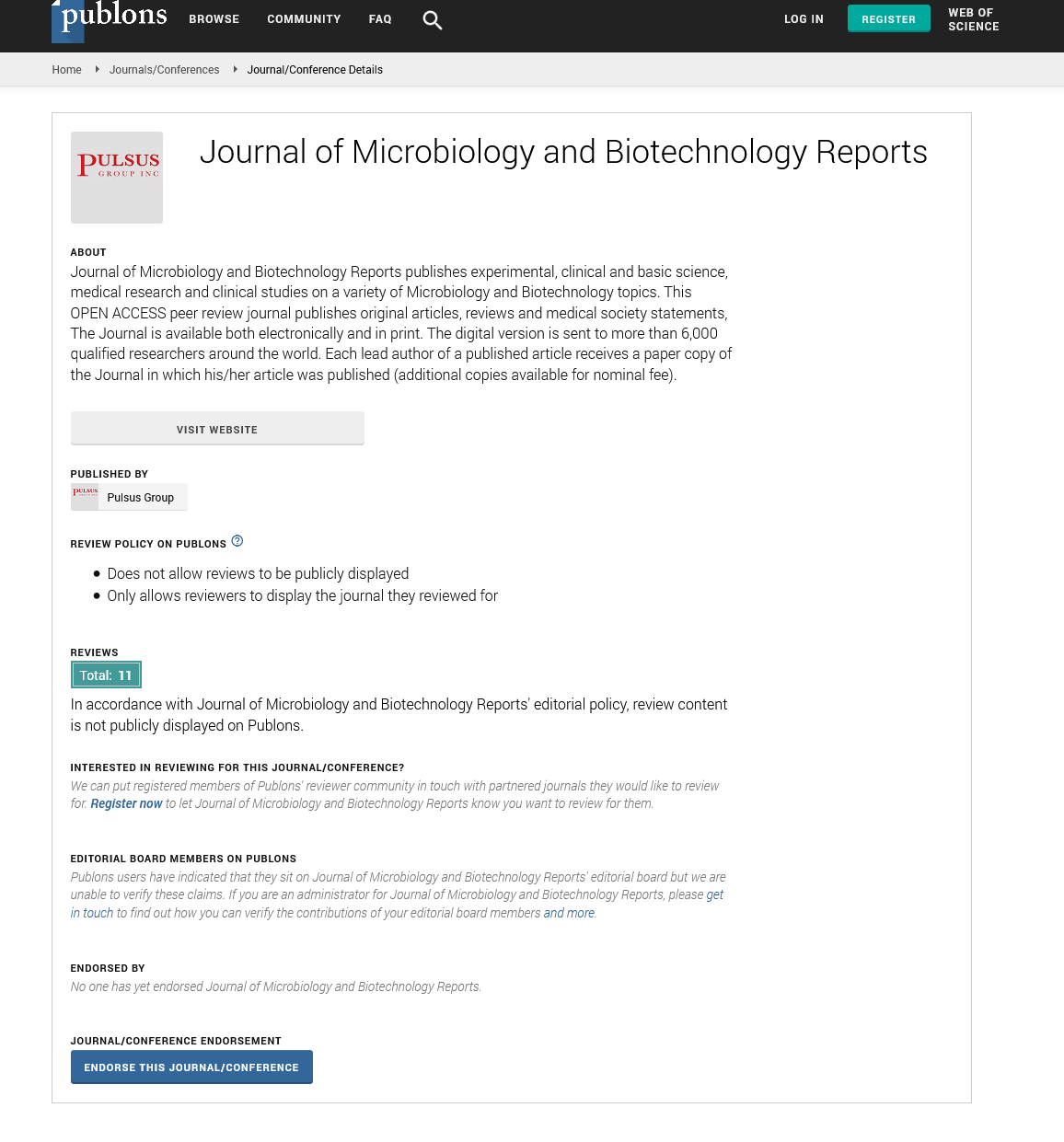Clinical genetics and genomics advancements
Received: 05-Jul-2022, Manuscript No. puljmbr-22-5213; Editor assigned: 07-Jul-2022, Pre QC No. puljmbr-22-5213 (PQ); Accepted Date: Jul 18, 2022; Reviewed: 13-Jul-2022 QC No. puljmbr-22-5213 (Q); Revised: 15-Jul-2022, Manuscript No. puljmbr-22-5213 (R); Published: 22-Jul-2022, DOI: 10.37532/puljmbr.2022.5(4).47
Citation: Smith J. Clinical genetics and genomics advancements. J Mic Bio Rep. 2022; 5(4):47
This open-access article is distributed under the terms of the Creative Commons Attribution Non-Commercial License (CC BY-NC) (http://creativecommons.org/licenses/by-nc/4.0/), which permits reuse, distribution and reproduction of the article, provided that the original work is properly cited and the reuse is restricted to noncommercial purposes. For commercial reuse, contact reprints@pulsus.com
Abstract
Genomic and genetic research is advancing at an unparalleled rate. The human genome project, which began twenty years ago, gave scientists their first looks at the human genome sequence and ushered in a new age of human genetics. Comprehensive genetic testing such as exome sequencing and genome sequencing became possible with the advent of next-generation sequencing (NGS) in 2005. While this is going on, significant work has been done to optimize bioinformatics pipelines so that variant studies based on NGS data can become faster and more precise. The diagnostic journey of suspected hereditary disorders has undergone a radical change as a result of these developments in sequencing technology and analytical techniques. The genotype-phenotype link and polygenic risk scores (PRSs) derived from genome-wide association studies have lately broadened our view beyond rare genetic changes to a genomic landscape implicated by the combined influence of both uncommon variants and polymorphisms. The enormous amount of genomic knowledge and the lengthy sheets of test results for full genomic sequencing provide a number of significant issues for doctors and genetic counsellors. Semi-automatic processes supported by artificial intelligence approaches may be the way toward "next-generation" clinical genetics and genomics.
Key Words
Cardiac rehabilitation; Core components; Guidelines; Heart valve surgery; Heart valve replacement
Introduction
Technology and clinical uses of genetics and genomics have advanced significantly during the last 20 years. Twenty years ago, the human genome project offered the first glimpses into the human genome sequence and heralded the beginning of a new era in human genetics. For the first time, biologists and geneticists had access to nearly the entire human genome, enabling high-throughput and genome-wide analyses that were previously inaccessible. Genetics and genomics, which had relied on Sanger sequencing for 30 years, were further pushed by the introduction of Next-Generation Sequencing (NGS) in 2005. Currently, hours of NGS-based Genome Sequencing (GS) may be finished for less than $1000. Large scale sequencing initiatives like the 1000 Genomes Project, UK10K, 100,000 Genomes Project, and most recently the China MAP project have been made possible by this technical breakthrough. The biggest problems in genetic and genomic medicine now lie in data mining and integrated analysis rather than data creation because the quantity of the human genome that has been sequenced is expanding quickly. The genome aggregation database research team performed extensive analysis on large genome and exome datasets to provide insight into gene constraint, population mutational architecture, and potential drug targets. Biobank resources, such as the UK Biobank, allowed researchers worldwide to investigate the genetic basis of disease traits and human physiological indexes. Even so, it is still unknown how much of the functioning human genome is related to disease features. The search for the "future generations" of analytical and experimental instruments is still active.
Conclusion
Medicine using genetics and genomics is developing at an unparalleled rate. The diagnostic odysseys of suspected genetic disorders have undergone a revolutionary change thanks to new experimental and analytical tools. Our view of the genomic landscape, which extends beyond uncommon genetic changes, is further broadened by a large-scale genotype-phenotype association and PRS models created from GWAS datasets. The overwhelming amount of genomic knowledge and the lengthening sheets of test results from comprehensive genome sequencing are also posing new hurdles for clinicians and genetic counsellors. Semi-automatic pipelines supported by artificial intelligence approaches may be the way to future clinical genetics and genomics.





